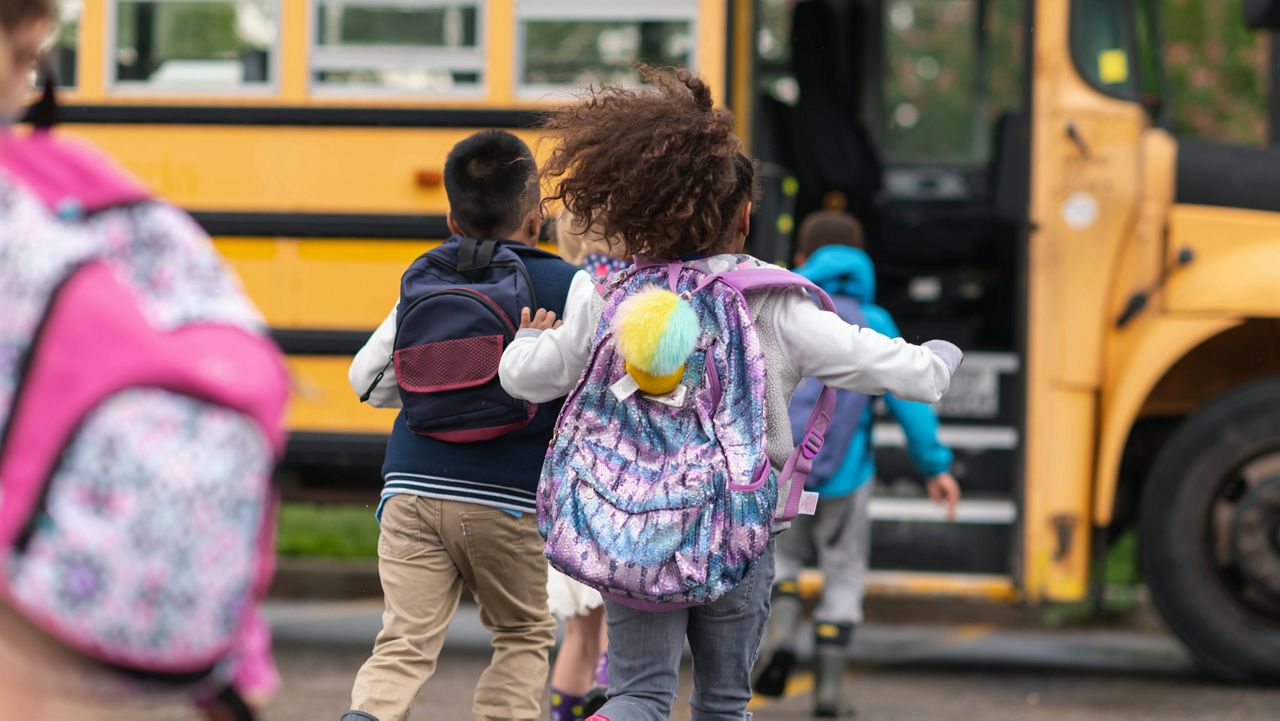Even as low-income families across most of the country are receiving federal food aid for this summer, thousands of Missouri families are still waiting for last summer’s benefits.
Missouri still needs to issue food benefits to around 177,000 children for a federal program that were designed to help cover costs from last summer, Mallory McGowin, spokesperson for the Department of Elementary and Secondary Education, said in an email to The Independent this week.
The state has so far issued benefits to more than 317,000 children, McGowin said.
Administrative issues have beset the program for at least the last year, officials have said: The delayed benefits even contributed to Missouri’s decision last month not to participate in this year’s version of the program. The state declined tens of millions in federal aid in part because officials lacked confidence they could disperse those benefits by the Sept. 30 deadline.
And the issues with last summer’s benefits continue to play out, as thousands still await the aid.
The Pandemic Electronic Benefits Transfer program, or P-EBT, is a federal COVID relief program administered by states that has operated in various forms since 2020 to provide extra food for kids, with funds loaded onto cards and used like the food stamp program.
The 2022 summer program provided $391 for food to any child who was eligible for free or reduced lunch in the 2021-2022 school year, along with kids under 6 who qualify for the federal food assistance program SNAP. The state’s education department determines eligibility for the program and the social services department issues benefits cards.
The education department will begin processing benefits for kids under 6 once it finishes processing school-aged kids’ benefits.
Around 19,000 students’ benefits remain to be processed, McGowin said. The state originally estimated that even more students would receive benefits — 454,000 total, rather than the current estimate of roughly 336,000. McGowin said earlier this summer that discrepancy is due to the eligibility data schools submitted to the state.
And there are an estimated 158,000 kids under age 6 who qualify.
Asked when the state expects to complete disbursing benefits, McGowin said: “[The Department of Elementary and Secondary Education] and [Department of Social Services] continue to work as quickly as possible to distribute P-EBT benefits.
“Funding for the program must be distributed by the end of 2023.”
Administrative issues
The state’s education department has largely cited administrative hurdles to dispersing the benefits — which has required coordination among the state’s 517 public school districts, the education department and social services department.
Advocates and national experts have pointed to the potential lack of adequate staffing and system capabilities to distribute the benefits. Other states faced administrative challenges last year to dispersing the benefits over the summer — but most dispersed them just a few months later.
Before Missouri started issuing summer benefits, it issued school-year P-EBT for 2021-2022, for children who had COVID-related absences, which not all schools had been tracking and required complex data collection.
It also needed to create a data portal from scratch to collect student eligibility information from schools to share with the education department and then the social services department. At the point when the state signed a contract with a vendor to create the portal, in August 2022, some states had already begun distributing the benefits.
The agency needed to gather eligibility information about students in a form it didn’t previously collect and share data across platforms that didn’t necessarily share the same format.
Missouri began dispersing summer 2022 benefits in June of 2023 and was among the last states to do so. (Two states, South Dakota and Alaska, did not have approved plans to issue summer 2022 P-EBT.)
‘The kids have been hungry’
Megan Bessenbacher, a single mother of three qualifying kids in Cass County, said she has been asking the state and her kids’ schools about last year’s aid for nearly a year.
Her six-year-old received the $391 benefit in June and her 14-year-old received it last month. But her four-year-old still hasn’t received it because the state hasn’t begun processing benefits for kids under six.
Bessenbacher also said she is waiting on around $120 in school-year P-EBT benefits from the 2021-2022 year. The school-year COVID absence benefits range from $21 to $120 based on days missed.
By late May, the majority of school-year benefits had been issued, McGowin said, and the state turned to processing the summer benefits. Although Bessenbacher said her 14-year-old daughter missed around four weeks of school due to COVID in the 2021-2022 school year, she has not received the $120 benefit.
The total $511 in benefits she is waiting on would nearly double her monthly SNAP payment — although, she said, all of the aid would’ve been helpful closer to last year, the period it was designed to cover.
“During winter, spring and summer break…the kids have been hungry,” Bessenbacher said — during times when they didn’t have free school breakfasts and lunches, which summer P-EBT was designed, in part, to mitigate.
And even during the school year, Bessenbacher struggles to put food on the table, particularly because of rising food prices. She often eats less in order to feed her kids.
“I eat only once a day, despite being hungry much more often,” she said.
Bessenbacher said she is unable to work due to disability and waiting to receive disability benefits, so the family has no income. She and her children live with her parents, she said: a “blessing, but with all they do, they shouldn’t be providing meals, too.”
With a budget that limits the healthy foods she can afford, Bessenbacher said — her kids especially love fresh fruit — and her youngest child’s sensitivity to certain foods, “it ends with me feeling like a failure as a parent at nearly every meal.”
The aid has been held in sight but just out of reach during a year when her kids desperately needed it, she said.
“Knowing that there are benefits available to help our children, while watching my children want for more is heartbreaking,” Bessenbacher said. “Knowing that more benefits for this summer have been completely turned down is gut-wrenching.”
Jeanie Honey, a mother of two kids who qualify in Springfield, is worried last summer’s benefits may never arrive.
Honey’s kids are school-aged, so they are among the roughly 19,000 still waiting: The more time passes, the more she’s worried that her children have been overlooked.
The pace of benefits disbursal and communication, she said, has stood in sharp contrast to other interactions she has with state government: “There was no issues with increasing my property taxes and property evaluations and keeping on track with making sure I paid them,” she said.
“Here was a lifeline and it was totally messed up and delayed.”
The benefits she is owed for last summer amount to $782.
“I think the state has been in complete denial of how things are for Missouri residents that live paycheck to paycheck,” she said. “I cannot even imagine how it is for those who don’t have a job.”
Permanent program on the horizon
Last month, Missouri decided not to participate in this summer’s version of the program, forgoing tens of millions of dollars in federal aid.
The problems administering P-EBT played a major role in the decision not to participate.
That decision set Missouri apart from 43 other states and Washington, D.C., which were approved to operate a summer 2023 Pandemic EBT program. (And many of those states, including Tennessee and Oklahoma, began issuing the benefits earlier this summer.)
Beginning next year, the program will be made permanent federally, called Summer EBT, with $40 in benefits per month of summer vacation. States can choose whether or not to opt in.
McGowin said last month that the state will “focus on implementing the system changes necessary to facilitate participation in summer EBT programs in future years.”
But for Missouri to participate in next year’s program, “the state’s data collection systems need to be addressed well in advance,” McGowin said.
To get more news and information from this partner, subscribe here.




